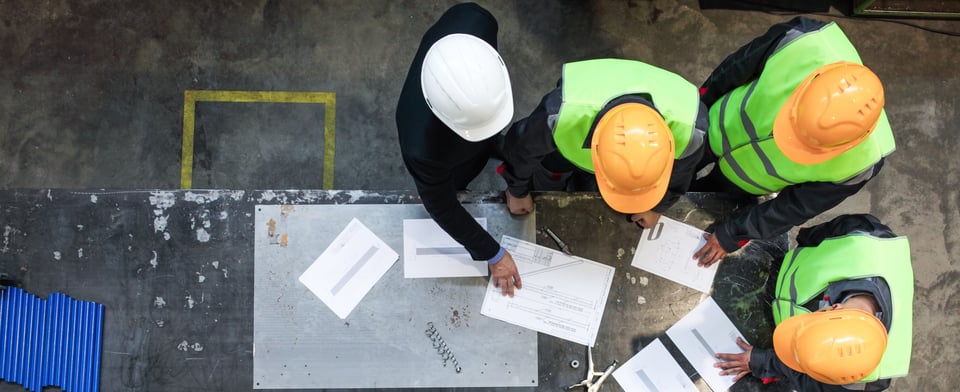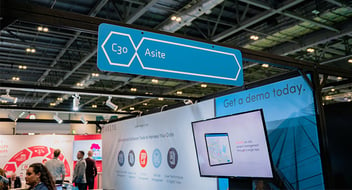
From design to bid to build, a single construction project produces a lot of data and information. Without a way to manage all of this intelligence, it quickly becomes unstructured, uncoordinated, and inaccessible. It also tends to go missing. Emerson, the global technology and engineering company, suggest that up to 30% of initial data created during design and construction phases is lost by project closeout.
So, how do you keep tabs on your files?
A Single Source of Truth (SSOT), according to Information Week, is “one source [of data] that everyone in a company agrees is the real, trusted number for some operating data.” For the construction industry, this means storing all information—design, document, images, snag lists, correspondences—in one single shared location.
Alongside keeping on top of your information and data, an SSOT has many other benefits. If you’re considering an SSOT, here are four more reasons why implementing one is the best move for you and your team.
1. Creates a Collaborative Environment
The construction industry is known for bringing together multiple stakeholders from across a widely dispersed supply chain, often for the first time. This makes creating a collaborative environment not as easy as it sounds.
With KPMG, the multinational professional services network, stating 82% of project owners feel they need more collaboration with their contractors, it’s a task that needs to be resolved sooner rather than later.
An SSOT makes the critical task of collaboration smoother, stronger, more efficient. It brings stakeholders together and provides an agreed single source of information. Here, the complex ecosystem is simplified, and real-time collaboration can begin.
2. Provides an Eagle-Eye View of Your Project
These different actors from various disciplines usually have different processes and practices which means different tools and software are introduced onto the project. Here, ensuring that different software and tools can share information is rarely a priority. This means project visibility is hampered and silos crop up.
In fact, according to B1M, a lack of efficiency around project information is estimated to add 20%-25% to the cost of a project.
An SSOT gives you 20/20 vision across your organization and project. Data and information silos and working in isolation becomes a thing of the past. Instead, you have a clear view of what is happening across the project within a shared area.
3. Avoids Unnecessary Duplication
When more than one version of a single document exists, a project slows as project managers scramble to find the most up-to-date version.
How often has a spreadsheet been edited by your team with a new version saved each time? Before you know it, multiple versions of the same document exist, making it practically impossible to find the right one. And with 88% of spreadsheets containing errors, your valuable project information is not only missing, but could also be littered with mistakes.
With an SSOT, this is not an issue. All team members work from a single source of information. Not only does this help avoid duplication, but it also helps to inform decision-makers on the right calls for their project.
4. Puts an End to the Blame Game
All construction projects carry some risk—design errors, late changes requests, and unknown site conditions. These risks often lead to a blame culture, as the industry’s adversarial nature results in stakeholders looking to pass the buck.
With research suggesting risk costs can range from nearly 3% to 8% of project costs, this issue needs attention.
An SSOT helps to eradicate mistakes as a single version of the most up-to-date information is available to everyone. With all information and data stored in one location, the risk of acting on old or inaccurate information is reduced.
Boosting Productivity and Saving Money
One of the best ways to implement an SSOT on your project or organization is with a Common Data Environment (CDE).
Here, a CDE becomes the single source of truth for the project, a central repository that houses all project information. It collects, manages, collaborates, and shares project information with the project team.
This increases productivity—KPMG suggests between £5.10 and £6 of direct labor productivity gains could be made for every £1 invested in information management—and saves money, with between 1.6% to 18% cost savings possible at different asset lifecycle stages.
Are you ready to reap the rewards of a single source of truth? Find out how a CDE can help you create a single source of truth for your next or even current project. Download our report now.
3 minute read
Asite Insights in your inbox.
Sign up for product news and our latest insights published monthly. It's a newsletter so hot, even global warming can't keep up.

.png?width=554&name=CDE%20Panel%20Discussion%20-%20Watch%20the%20Replay2%20(002).png)



